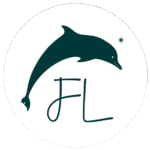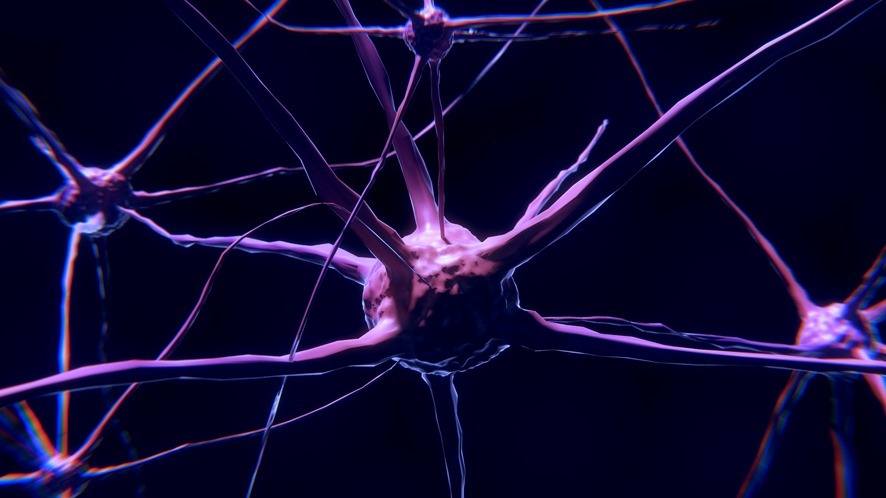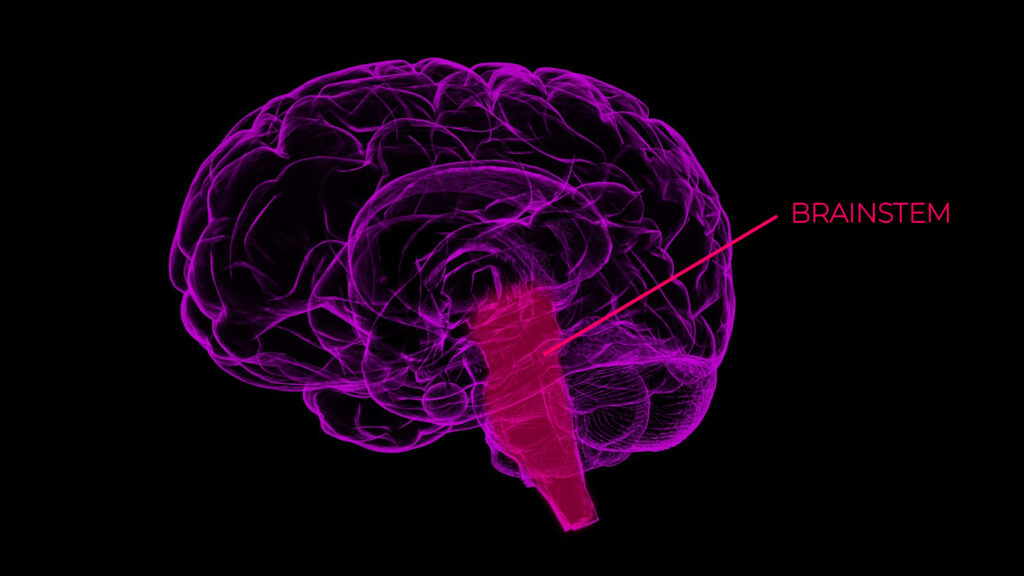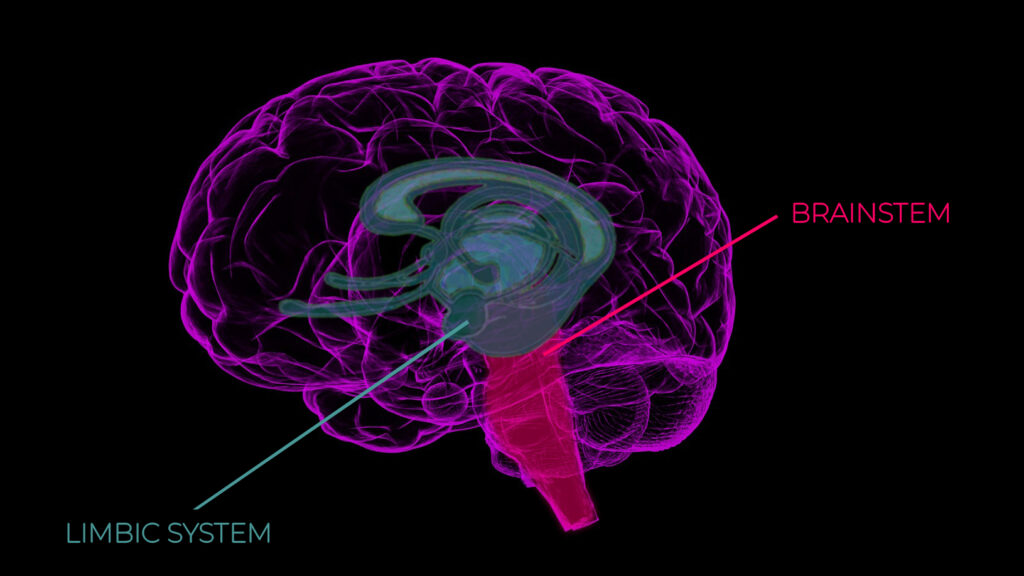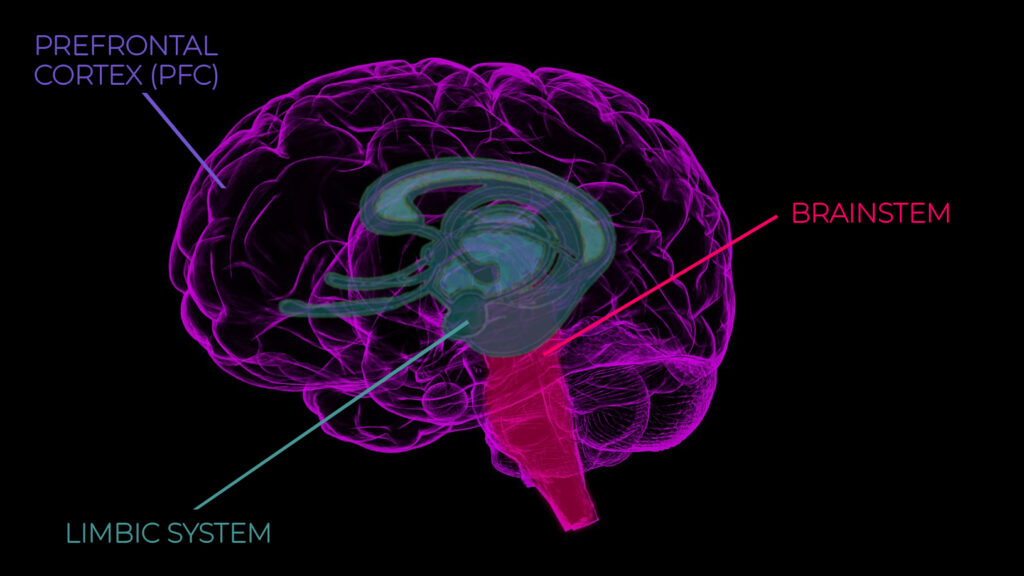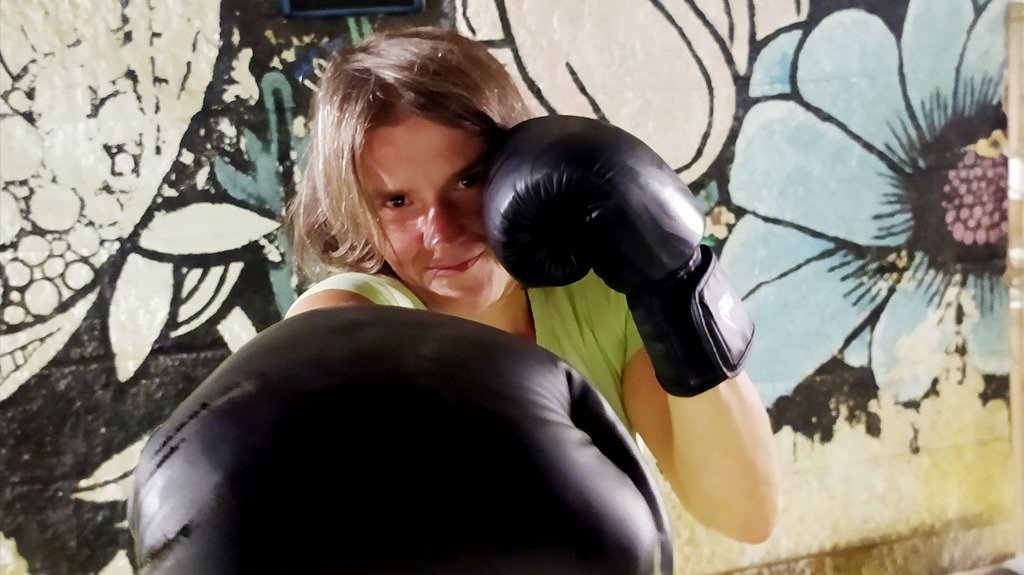Overview
Mind = Ego?
In recent years, there has been a growing tendency to dismiss everything that originates in the mind. A wide range of thoughts, reactions, and impulses are often clustered and labeled as ego—without any distinction. In some perspectives, our ego has a bad reputation. Yet, our mind is just as much a part of us as our beating heart, our emotions, and our intuition. Even more—our brain is a precondition for perceiving and making use of these qualities.
This article is an invitation to release your ego out of the shadows, to take time to understand & integrate it in a better way. By gaining knowledge about how your brain operates, you can consciously use its power. After all, this is a key element of successful transformation.
when transformation fails...
Maybe you are one of those people who have tried to change and transform a particular pattern: submissive behavior toward your boss, conforming within your family, angry outbursts toward loved ones, excessive reactions to certain triggers, falling back into self-deprecation, or a toxic relationship, smoking, and so on.
There are many things we wish to change about ourselves. And to be completely honest with you—most of the time, it doesn’t work. At least, not in the way we envisioned and not always right away.
When transformation fails, self-blame, guilt, and even self-bashing can take over. That’s exactly why today, I want to tell you something about your brain.
Our brain is a miracle
Every neuron in our brain has about ten thousand connections (synapses) to other neurons. This results in hundreds of trillions (!) of synapses within our nervous system, just in the part housed within our skull. Various groups of neurons form vast, web-like structures.
Many insights in this article are drawn from Mindsight by Daniel J. Siegel. Siegel writes: “Even if we wanted to, we wouldn’t live long enough to count all the synaptic connections.”
He further explains: “Given this number of connections, the possible ‘on-off’ firing patterns of the brain—its potential for different activation states—have been calculated to be 10 to the power of a million. That is, a ten followed by a million zeros. This number is said to be greater than the number of atoms in the known universe.”
This is a moment to pause and feel humbled: This is what our brain is capable of with its anatomical and functional structure. This capacity forms the foundation for transformation and change. Among other things, Transformation occurs, by creation and activation of new mental maps.
We cannot possibly experience all potential activation patterns of our brain in a single lifetime. That’s a bit of a relief, isn’t it?
But—how do we create these maps?
Transformation | clearing old & creating new maps
An old mental map holds information about who you are, what defines you, your strengths, weaknesses, and limitations. These are the pieces of information you’ve gathered about yourself (and others) throughout your life. Those have been integrated into a map. Tha map shapes your self-image, worldview, thoughts, feelings, and behaviors—regardless of whether the information in this map is complete or accurate.
Striving for change & transformation, many hit the first barrier: “I can’t imagine that!”—and then give up. Unfortunately. Because change is possible, and it starts with opening up to an idea that a never imagined, felt outcome could take place. The more we are identified with an old mental map (whether of ourselves or others), the harder change is.
For example, a woman who desires clarity, self-determination, and connection in her relationships can only start creating this outcome in her mind, when she starts imagining it. She must see herself in a situation where she experiences exactly that: clarity, self-determination, and connection.
By imagining herself moving, seeing her facial expressions, observing how she interacts, feels, and thinks when she experiences clarity, self-determination, and connection. Creation of a new mental map starts exactly here: When imagination is being nourished by an emotional experience & corresponding thoughts.
That´s far away from “magic”: This way desired clusters of neurons from different domains (thoughts, feelings, imagined situations) are prompted to fire together (maybe for the first time). The clusters of neurons form the foundation of a new mental map.
In our example, alongside the old map (“I am insecure, indecisive, emotionally dependent, not assertive, and feel isolated because of my fear”), a new one starts to evolve—slowly and gently.
You´ll see later, that the neurobiological connections of these maps, can lead to new emotions and actions. And that´s transformation. It starts with a conscious utilization of our mind!
Transformation | 7 reasons why people give up...
- Over-identification with the old map: An old map provides security, while a new one leads us upon new pathways—many people fear uncertainty (“I know who I am and how the world works.”)
- Resistance: While visualization, resistance & disbelief may arise—the old map with its assumptions sneaks in (“can’t do it,” “impossible”). Beneath every resistance there are underlying, strong beliefs & emotions lie (e.g., “I don’t deserve this.” & Helplessness).
- Perceived failure: The old map showing up (“I acted and felt the same way again, even though I wanted to do things differently.”) can lead to a fundamental attribution error & giving up because the surfacing old map (that´s normal!) is being interpreted as failure
- Failure: If a different outcome cannot be achieved in one situation, people tend to think, that that´s a sign, their strive for change isn´t working, which reactivates the old map and leads to an
- Unconscious return to the old map: Remaining trapped in the old map
- Self-blame, guilt, and shame: These feelings may take over, as things don’t always work out as gurus, coaches, or anyone else may say it should be (it´s not true! It´s a process, ladies & gentlemen!)
- Lack of knowledge: The old maps of self-image, emotions, and associations will not suddenly disappear—once in a while they become active again – especially when stress accumulates in the system. This is exactly what this post is about!
Transformation does not mean separating, suppressing, or getting rid of what you have been until today. On the contrary—it is about integration & reclaiming of conscious decisions and self-realignment. This requires you to first accept and embrace what you think, feel, and do, even if you’d like to change. Rejection creates stress in your system and forces your prefrontal cortex (where the new maps evolve) to shut down: Your new mental maps drift further away. So instead of rejecting what´s there (the old map), try to relax & accept (“I´m on my way and do the best that I can!”). Too much stress prevents your transformation from taking shape!
Get to know your mind, your brain, and use this knowledge—for a better understanding & more compassion with yourself.
Transformative steps can be quick. But normally (and contradicting many transformation coaches), I believe that sustainable transformation takes time. Sometimes, it may feel like you can “escape” yourself into a new identity by simply creating a new one. But since that would be based on rejection by experience, I can state: This is not working.
Change is possible! But it requires a commitment to maintain conscious work. Sustainable transformation often fails, because the drawn image about transformation does not align with neurobiological realities.
Excursus into neurobiology
This next section is very simplified! Your brain has many structures, of which three are particularly important for transformation: the brainstem, the limbic system, and the prefrontal cortex.
1. The brain stem
From an evolutionary perspective, the brainstem is the oldest part of our brain. Our human “animal” resides here. The brainstem includes ascending and descending nerve fibers, clusters of neurons. It receives information from the body and sends information “down” as well. The brainstem processes and integrates sensory input and motor information.
The brainstem emerges from the spinal cord and includes, from bottom to top, the Medulla Oblongata (extended spinal cord), the Pons (bridge), and the Mesencephalon (midbrain).
Functions: Automatic regulation of heartbeat, breathing, blood pressure, metabolic processes. The brainstem controls the body’s energy levels, as well as the levels in the higher brain areas, including the limbic and cortical structures.
Important insight: In case of danger, the stress response in the brainstem generates energy, and in collaboration with the limbic and cortical structures, it decides whether we fight, flight, or freeze. Thus, the brainstem modulates the survival mode. If brain or body require a rapid surge of energy, the brainstem provides it.
2. The limbic system
The limbic system is not just one structure, but a functional unit consisting of several structures. Among these, the following are considered part of the limbic system:
- Hippocampus – important for generating long-term memories
- Hypothalamus – regulates the endocrine glands (hormones): controls body temperature, hunger, sleep, fatigue, reproductive organs, thyroid & adrenal glands (stress!)
- Thalamus – regulates sleep, attention, and alertness
- Olfactory bulb – processes sensory input (smell)
- Fornix – transmits signals from the hippocampus to the mammillary bodies and septum
- Mammillary bodies
- Cingulate gyrus – involved in autonomic functions, regulates heart rate, blood pressure, cognitive and attention processes
- Amygdala (almond-shaped nucleus) – memory, decision-making, and emotional reactions, sends motivationally significant signals to the cortex
- Basal ganglia – movement control, learning, habits, and emotions
The limbic system (LS) is involved in generating basic drives and emotions. Simply put, the LS always asks whether a situation is “good” or “bad” for us (We evaluate everything! Or, rather, our brain does!). We approach the good and withdraw from the bad (action). This “approach/avoidance program” is located in the limbic system. The LS also generates emotions that then motivate us to take action (approach/avoidance).
The LS also modulates how we interact in relationships. All mammals with a limbic system are capable of showing “attachment” (unlike amphibians, for example).
Tasks: Regulation and mediation of relational behavior, drives, emotions, and stress. The amygdala & hippocampus form memories of facts, experiences, and the emotions connected to them. The amygdala is closely associated with the emotion fear and can trigger a survival reaction without us thinking about it. For example, if we see a snake, we might jump back and only later “understand” why we jumped (Low Road, LeDoux). The process of thinking and understanding the emotion happens in the cortex. This can take too long. For this to happen, the information from the LS must be linked to the cortex (High Road, LeDoux).
Key insights: In case of fear and stress, we often react automatically! The hypothalamus mediates hormones for the stress response. The adrenal glands are stimulated (after the release of adrenaline) to release cortisol, which mobilizes energy (see brainstem) to deal with the trigger. This is helpful in the short term (exams, life-threatening situations), but long-term it can be damaging.
If the limbic system becomes sensitized (e.g., through traumatic experiences), it may react to harmless triggers. Everyday life can then become a nightmare because there is a constant state of alertness. What was supposed to be an “exception” becomes a chronic state.
It is crucial (!), that we develop the ability to reduce excessive limbic activity (= chronic stress) (self-regulation).
3. The prefrontal cortex (PFC)
The prefrontal cortex (PFC) is part of the cortex – the outermost layer of the brain. As humans evolved, this area expanded and grew bigger. The cortex operates more complex patterns of neural activity that go far beyond basic survival responses and bodily functions. The PFC is located frontal to our forehead (frontal lobe). As can be seen in the simplified illustration, there are connections between the limbic system (emotions, stress) and the PFC.
Anatomically, the middle prefrontal cortex is only one synapse away from the limbic system. Additionally, the bulging, lower part of the PFC also reaches towards the outer limits of the brainstem.
The frontal lobe houses the “neural maps” that tell us who we are and who we are not – information about our personality.
The prominent role of the PFC can be understood by the story of railroad worker Phineas Gage who lived in the 18th century. When an iron rod pierced his skull (the frontal lobe), he survived but his entire personality was changed, and he could no longer control his impulses. The damaged frontal lobe disturbed the balance between his “mental abilities and his animal drives”. This case provided insight into the functions of the frontal lobe.
Functions: Thinking, planning, problem-solving, decision-making, risk assessment, and behavioral inhibition. The neurotransmitter GABA effects from here as an inhibitor for overstimulation of receptor neurons throughout the brain. It “brakes impulsive actions”. The PFC is also involved in Imagination, combining facts and experiences.
Key Insights: We create representations (concepts) of abstract ideas like senses of self, identity, time, and morality in the PFC. When we visualize or recall something vividly, the (lateral) PFC initiates part of the occipital lobe. The “visual area” is consciously activated.
The PFC houses our mental “maps” about what we have “learned” over time: About ourselves (self-image), our boundaries, weaknesses and strengths, about the world and – our fellow human beings, and so on. The abilities for behavioral control, insight, and moral action merge, as well as the ability for empathy.
Especially important: We can create new maps and discard old ones (we can “think about our thinking”)! This very ability is necessary for us to achieve transformation – profound change – sustainably! We can also access maps of others’ inner worlds (a prerequisite for empathy) – if the PFC functions properly.
Summary - Prefrontal Cortex
- The neurobiological counterpart of transformation is the creation & activation of new mental maps.
- For this, a functioning prefrontal cortex (PFC) is essential.
- The PFC influences the limbic system and the brainstem (regulating stress).
- The connection between PFC – limbic system – brainstem, also allows the PFC to influence the body.
According to Daniel J. Siegel, the PFC takes on the following essential functions for our well-being:
1. Body regulation
2. Tuned communication
3. Emotional balance
4. Reaction flexibility
5. Fear modulation
6. Empathy
7. Insight
8. Moral awareness
9. Intuition
State of emergency | it´s too much...
Every individual experiences a those moments, when it´s too much. One becomes “headless,” acts impulsively, or falls back into old patterns (= old mental maps).
This happens when the activation energy is so intense that the PFC can no longer regulate it. Hunger, lack of sleep, or pain can reduce baseline resilience. When additional stressors (work pressure, conflict with a partner, friend, or a tight schedule) arise, the level of activation can be elevated beyond of what the PFC can regulate.
As mentioned earlier, triggers can activate overwhelming emotions and unconscious emotional memories. Stress on top! The new mental map (what you wanted to do, say, or feel is out of reach now – no access, since PFC is down!).
If the instinct drives take over (Fight, Flight, Fright, or Freeze), and the PFC cannot counteract, we lose those nine essential functions mentioned above. We find ourselves in situations where:
- we breathe quickly, sweat – our heart beats fast (body regulation),
- we feel isolated and cannot connect in to others (tuned communication),
- we feel overstimulated, depressed, or paralyzed (emotional balance),
- we are unable to pause and decide how we want to react (reaction flexibility),
- the inhibition of limbic outbursts no longer works, and we are controlled by our overwhelming emotions (fear modulation),
- we no longer have real access to the other person, unable to understand or feel them (empathy – mental maps of others),
- we lack an overview of our present, past, & future – we no longer see ourselves or what is happening clearly (insight),
- our actions do not align with our own moral beliefs, we lose awareness of our values – we are “beside ourselves” (moral awareness),
- we can no longer intuitively sense and decide what “feels right,” as the integration of information from the entire body (PFC) no longer functions. What “feels right” in the moment may later be seen as “wrong” (intuition).
In this state, we have no access to the functions of the PFC. And it is precisely the PFC that contains, organizes, and activates the newly created mental maps.
Summary - State of emergency
- Access to new mental maps requires a functioning prefrontal cortex (PFC).
- In a confusing emergency state, the PFC shuts down and closes off.
- The animal instinct part takes over, and we are driven by a survival program.
- Essential basic functions of the PFC are disabled (see above).
- It is completely pointless to condemn oneself for this emergency state.
- One may, in reflection of the events, ask forgiveness for any harm caused to others.
- The situation and oneself should be reflected upon afterward (“What happened, and why?”) – this is important.
- Reflection expands the meta-map of oneself and creates the conditions to interrupt in time next time if necessary (learning regulation).
- This does not mean failure of transformation & change, because…
- New mental maps in form of felt-visualized changes – what we wanted to do, say, think, or feel – are no longer accessible in such moments.
Transformation | Understanding the mind
We are not always stay on a new path in every situation. Transformation is not linear.
When the hippocampus in the limbic system serves us old, unprocessed traumas or intense emotional memories, things can “shut down”. That can happen in everyday situations triggered by a hidden cue. Daily stress and conflicts can add on top.
Our PFC is capable of doing a good amount of regulatory work, and it can learn, its abilities can expand. This can be achieved by self-understanding and reflection, by getting to know ourselves better and better.
That´s how my coaching is designed with the Mirror Process in the Inner Universe.
By acting with patience & persistence, we help the PFC ensure more continuity in a desired transformation.
Once the limbic system & brainstem fire up in the pattern of a prolonged fight-or-flight mode, it’s all about regulation and calming down first. Recognizing stress and having tools for regulation at hand is an essential part of transformative processes. Everything new requires energy, attention, and thus already poses a stressor in itself.
Feel encouraged to be more understanding with yourself when desired changes do not remain constant or when there are fluctuations.
And – your mind is not inherently your ego!
If you read this article carefully, you will notice that shutting down your mind (your PFC) is more likely to cause egocentrical and unreflected behavior.
I truly hope that this detailed article fosters insights, inner peace, and more compassion for yourself.
Straight from the heart,
Yours Kristina
Invitation
If you’re considering being accompanied through the mirror process of inner work, you can book a free preliminary talk in my booking calendar at the top right of this page or below this entry.
The model assumptions are based on years of professional observation, personal experience, and knowledge from psychoanalysis, psychodynamics, and developmental psychology. For more information, please refer to the Copyright notice. The articles, including assumptions and hypotheses, may be shared freely, but please always provide attribution (my name and the website).

